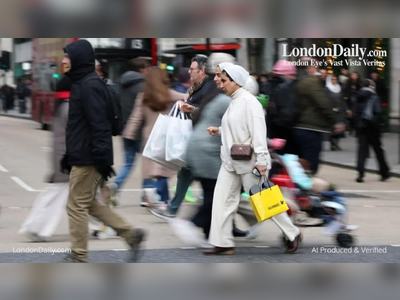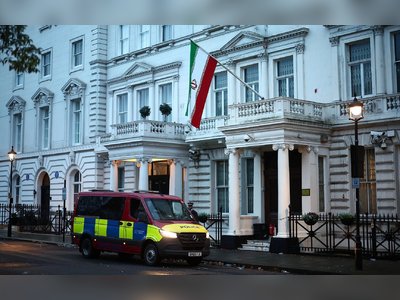Asia’s next coronavirus flashpoint? Overcrowded, neglected prisons
All across Asia , and around the world, people have been urged to keep a safe distance and maintain good personal hygiene amid the coronavirus pandemic. But if your “home” is a prison dormitory that holds five times the 100 inmates it was designed to, doing either is almost impossible.
Overcrowding is the norm in the prison systems of many developing nations, but the Philippines has long held the dubious distinction of having one of the most jam-packed in the world.
In Manila City Jail, one of an estimated 933 correctional facilities in the country, sweaty bodies lie in cells, toilets, stairways and other poorly ventilated areas, as inmates try to grab some sleep wherever they can. Some even have to take turns.
Poor living conditions – such as the subdivided units or caged homes that impoverished Hongkongers live in, packed migrant workers’ quarters in cities across Southeast Asia and slums with no running water – are traditionally fertile ground for disease transmission.
But with Asia’s largest prison systems plagued by low health care standards and a limited ability to test inmates, experts say any outbreak is likely to be deadlier than in the general population. Already, the suspension of prison visits to prevent the virus from spreading has taken a toll on the mental well-being of inmates.
Field workers and researchers interviewed by This Week in Asia say now is as good a time as ever for the authorities to reduce prison populations and consider initiatives to reform justice systems, while channelling more funds into rehabilitation and health programmes for inmates.
“I actually think things are in dire straits,” said Clarke Jones, criminologist and senior research fellow at the Australian National University. “Prisons and jails [in Southeast Asia] have become so neglected and overcrowded that it will be near impossible to manage if Covid-19 takes a real hold.”
Jones said official records were not transparent and publicly available information on jails was limited.
“There have been many deaths but they are kept secret, not recorded, and [the bodies are] cremated soon after death,” he said. “I don’t think we will ever know the true infection and fatality rates … due to corruption, lack of reporting, and lack of any health care.”
The problem of overcrowding is compounded by chronic underfunding and a general lack of resources. Across Metro Manila’s 47 jails, for instance, “one single doctor is responsible … for a staggering 45,000 inmates”, according to Tobias Brandner, a prison chaplain and professor at the Chinese University of Hong Kong who wrote a research paper on the subject last year.
“Around HK$550 (US$71) per inmate per year is budgeted for medical needs,” he wrote, adding that for food “less than HK$10 (US$1.29) is available per inmate per day”.
“Not surprisingly, most of the visitors in the entrance area of the [Manila City Jail] wait with large food containers for their relatives behind bars,” Brandner said.
A lack of food further increases the prison population’s vulnerability to a coronavirus outbreak, as malnutrition compromises the immune system.
The fact that “most people who are incarcerated in Asia are young, between 15 and 30 years old … is a good thing” when it comes to Covid-19, said Ziad Tohme, a former doctor who works with the International Committee of the Red Cross (ICRC).
However, “bad ventilation, poor food provisions and water quality, stress and overcrowding make them more vulnerable”, said the regional specialist on health care needs in the Asia-Pacific region’s detention facilities.
Tohme said that Asia had taken the coronavirus seriously earlier than the rest of the world, but warned that the region’s “systems are fragile to begin with and underfunding is affecting the size of the response”.
Another concern stemmed from the fact that prisoners were more likely to have poor health than the general population, said Olivia Rope, director of policy and international advocacy at the Penal Reform International. A significant number of inmates have conditions such as heart disease, diabetes and cancer.
“We are particularly worried about the risks to older people in prison – [there are] a growing number, especially in countries like Japan and South Korea,” she said.
MORE ISOLATED THAN EVER
Amid rising concerns about the psychological health of prison inmates cut off from the outside world is the well-being of one group – pregnant prisoners and the 19,000 or so children who live with their mothers behind bars around the world.
“The anxiety and stress created by not being able to communicate with family members or seek mental health support are of significant concern for vulnerable women who have often experienced traumatic violence,” Rope said.
She added that ongoing assessments of the pandemic’s impact on women prisoners showed that those in some areas had it better than others.
“For example, in Kenya where women rely on charities and family members for sanitary pads, they have had a shortage of these vital supplies because such visits are now banned,” she said. “We also know that women are greatly impacted by separation from their children and, at a time like this, it is of huge concern.”
Fear of the pandemic among prisoners has led in recent weeks to several violent riots in detention facilities, such as in Indonesia.
“Inmates are under huge pressure,” said Brandner, the professor, noting that violence could erupt in other prisons. “They are as fearful as everyone else, but they are cramped together, they don’t have anywhere else to go and now they can’t receive regular visits.”
Brandner said that in places like the Philippines, the pandemic was creating “an imbalance in the ecosystems of some prisons”.
Religious groups would often go in and offer food, personal hygiene items and free medical consultations, as well as spiritual and practical advice to mitigate prison hardships – but most of this has stopped.
“It has a great impact on the psychological, material and spiritual well-being of the inmates,” Brandner said. “This isolation is a high price to pay.”
But inmates have not been left completely in the lurch. The ICRC has donated dozens of tablet devices for prisoners in the Philippines to use to call their relatives.
In the Manila City Jail – on the country’s largest island of Luzon where a lockdown has been imposed – visits have stopped but personnel have remained inside the jail, as part of a “carefully worked out and documented strategy to prevent the entry of Covid-19”, said Jones, the criminologist, who recently spoke with the warden there. The facility had not recorded any infections as of end-April.
“Morale is high due to the psychosocial programme they are running for personnel and inmates alike,” he said, adding that a Skype room was set up for inmates to stay in contact with loved ones.
“There are no security issues or unrest as the inmates are kept well informed and consulted on most management issues.”
UNPRECEDENTED CHALLENGES
Official data shows that the Philippines’ prison system is running at about 500 per cent over capacity. As of March, there were 134,748 detainees in the country – a number that has ballooned in recent years largely due to the government’s bloody anti-drugs crackdown.
More than 300 of the country’s prisoners have been diagnosed with Covid-19 – most of whom are housed in detention facilities on the island of Cebu. At least four have died.
But detainees are reporting higher death rates, according to Human Rights Watch, whose deputy Asia director Phil Robertson said “unreported deaths of inmates show the urgent need for the Duterte government to be transparent about the spread of Covid-19 inside the country’s overcrowded prisons”.
In response to the pandemic, Filipino authorities recently released about 10,000 inmates, including some who were serving sentences of six months or less, those being held ahead of trial who could not afford bail, and certain sick and elderly prisoners.
Harry Tubangi, health-in-detention programme manager for the ICRC who is based in the Philippines, noted that the crisis presented uncharted territory for the authorities.
He said his organisation had helped set up five Covid-19 isolation centres for prisoners with more than 500 beds in total, but the length of time waiting for test results – sometimes “more than a week or two weeks” – had made things challenging.
“First thing is to identify suspected cases and isolate them, and then be able to test them and determine the level of severity,” he said. “You also have to sort out patients who have Covid-19 from those who have other infectious diseases, such as tuberculosis.”
Thousands of inmates in Philippine prisons are thought to die of infectious diseases every year.
In total, the country has officially recorded more than 10,000 coronavirus cases and upwards of 650 deaths – numbers that are only expected to rise as it struggles to bring the outbreak under control.
The country is not alone in having prisons that are poised to become a flashpoint for the virus.
In Pakistan, where more than 22,000 infections have been confirmed, about 100 prisoners had tested positive as of April 21 – but the authorities there are only testing inmates who show symptoms, according to Ali Haider Habib of advocacy group Justice Project Pakistan.
Even though prison visits have been suspended, Habib said there had still been a large influx of inmates – about 500 new prisoners a day in some facilities.
“With such a massive churn rate and with prison staff going in and out, Pakistan’s prisons could be on the verge of a serious outbreak if a preventive strategy and contingency plans are not implemented effectively,” he said.
There were many vulnerable detainees in Pakistan, Habib said, with some of the most at risk being the elderly and those with pre-existing medical conditions.
About 2,400 inmates were already infected with other diseases and viruses such as HIV, while 600 or so had a mental illness – putting them “at particular risk because they are not always able to understand and follow instructions or maintain personal hygiene”, Habib said, citing the Covid-19 deaths that were reported after an outbreak in two psychiatric wards in South Korea.
As well as reducing Pakistan’s prison population, Habib called on the authorities to take other “emergency measures”, such as ramping up testing capacity for both prisoners and staff “and ensuring adequate medical facilities along with the presence of doctors and health care professionals”.
In neighbouring India, prisons were placed under lockdown and thousands of pretrial detainees released on parole after the authorities discovered the virus had begun to spread through the country’s correctional facilities.
It is unclear how many Indian inmates have caught Covid-19, but 19 detainees of Madhya Pradesh state’s Indore Central Jail and 77 inmates at Arthur Road jail in Mumbai tested positive last week.
Madhurima Dhanuka, lawyer and head of the Prison Reforms Programme for the Commonwealth Human Rights Initiative, told the Associated Press measures needed to be taken soon in India or things would “become extremely difficult”.
“It is a terrifying situation,” she said.
TOO MANY PRISONERS
Last month, Indonesia announced that about 30,000 inmates were expected to be released to curb the spread of infection inside correctional facilities. Myanmar also said that about 25,000 people would be freed unconditionally, while Iran granted more than 85,000 people a temporary release and told them to await further instructions.
In Thailand, where a group of inmates escaped after rumours of a coronavirus outbreak, jail sentences for 8,000 inmates have been suspended.
Kittipong Kittiyarak, executive director of the Thailand Institute of Justice, said the authorities should consider implementing alternatives to imprisonment as well as ordering a temporary or early release for vulnerable groups and those with non-violent, minor offences.
But even this would not be enough to avoid “catastrophic consequences” in the midst of this pandemic and any similar future crises, he said.
“The virus has brought to the foreground systemic problems that have existed in criminal justice policies for decades, and that is the overutilisation of incarceration as the primary form of sentencing,” he said.
Especially in this part of the world, punitive drug policies have led to a sharp rise in the number of prisoners.”
In Australia, a group of more than 370 lawyers, academics and advocates signed an open letter urging the authorities to release prisoners, or at least consider the possibility of doing so.
The country’s most populous state of New South Wales had taken steps to pass emergency legislation allowing the government to release selected prisoners early, said Lorana Bartels, a criminology professor at Australian National University who co-authored the open letter.
But no releases have yet happened and “overall, the response has been to focus on measures such as increased hygiene, isolation and distancing, rather than using this as an opportunity to review the operation of the criminal justice system more broadly”, she said.
The pressure on Australia’s prisons was only likely to increase, Bartels warned, given legislation that may not allow those accused of transgressions considered particularly offensive in a pandemic to be released on bail.
While Australia had been relatively successful at minimising community spread of the coronavirus, which had helped prevent major prison outbreaks like the ones seen in the United States and elsewhere, Bartels said she was disappointed at limited moves made to address the penal system’s underlying issues.
Among these are the “over-representation of indigenous people [and] people with poor physical and mental health”.
She said she was among those calling for “justice reinvestment” – or diverting the significant amounts of funding allocated to prisons in Australia to “evidence-based community projects that address the underlying causes of crime”.
According to the latest Penal Reform International report, the majority of people in prison around the world come from disadvantaged backgrounds and are likely to have a history of abuse and neglect.
Brandner, the prison chaplain and professor who also advocates for reducing global prisoner numbers, said that the Philippines’ judicial system needed to be reformed.
“People spend a very long time in detention without being sentenced,” he said.
“Also, more people could serve their sentences in the community instead of being incarcerated.”
Jones, the criminologist, agreed, saying it was difficult to reform a country’s correctional system without a wider change in its judicial system.
“Corruption plagues most systems in developing countries, so most of the money going into rehabilitation or health care gets siphoned off to correctional personnel,” he said.
“Many facilities don’t want to reduce congestion levels as they will lose out on the food budgets, and therefore won’t get money in their back pockets.”
In some cases, Jones said, it was prison gangs – rather than the authorities – who provide inmates with health care and rehabilitation using their own resources.
Tohme, the ICRC expert, said that countries tended to see prisoners as a financial burden, with many among the general populace disconnected from life inside detention facilities.
“But everyone is at risk of being detained. You can drive your car and run over someone,” he said. “Health care in detention is a human right and a public health issue.”




















